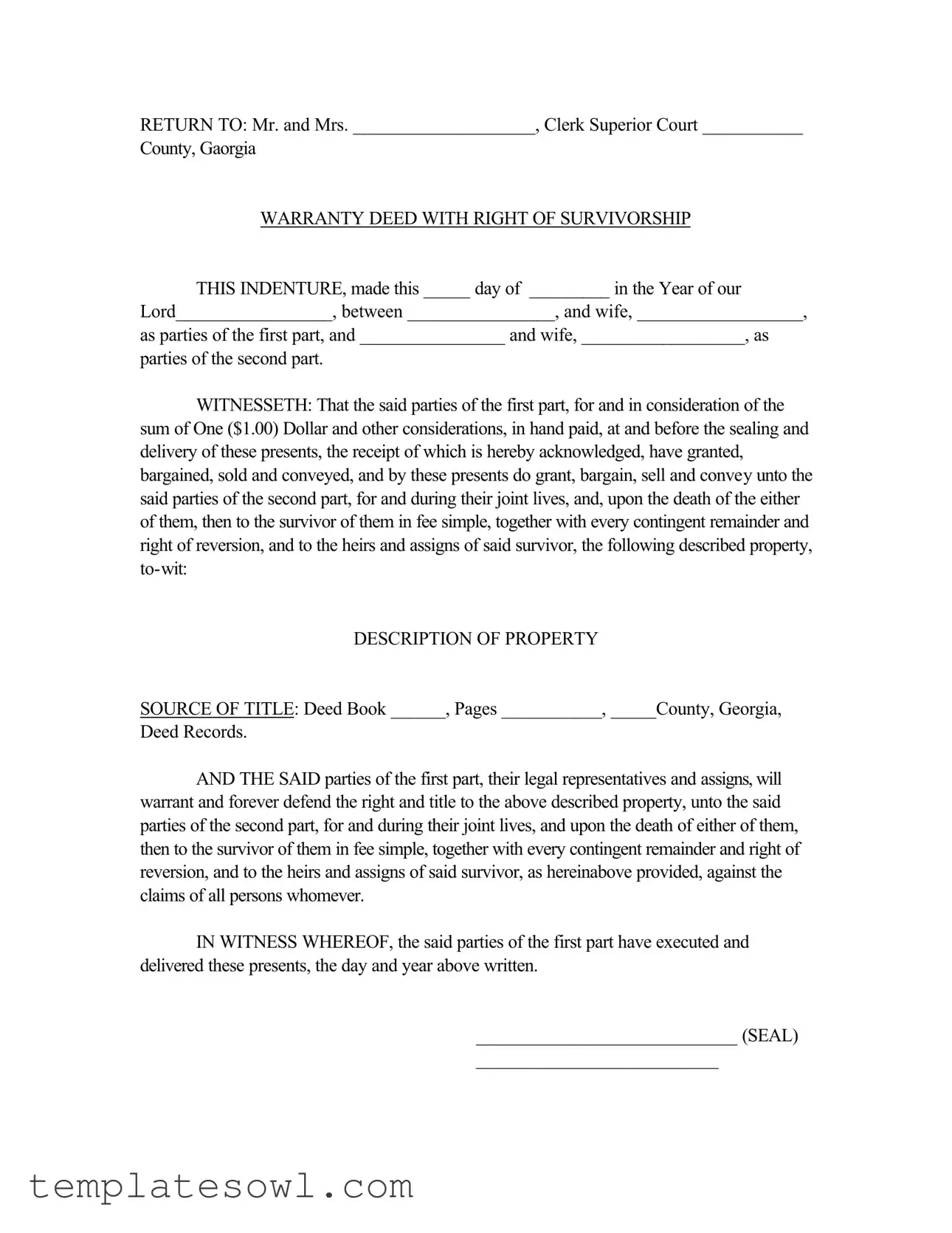RETURN TO: Mr. and Mrs. ____________________, Clerk Superior Court ___________
County, Gaorgia
WARRANTY DEED WITH RIGHT OF SURVIVORSHIP
THIS INDENTURE, made this _____ day of _________ in the Year of our
Lord_________________, between ________________, and wife, __________________,
as parties of the first part, and ________________ and wife, __________________, as
parties of the second part.
WITNESSETH: That the said parties of the first part, for and in consideration of the sum of One ($1.00) Dollar and other considerations, in hand paid, at and before the sealing and delivery of these presents, the receipt of which is hereby acknowledged, have granted, bargained, sold and conveyed, and by these presents do grant, bargain, sell and convey unto the said parties of the second part, for and during their joint lives, and, upon the death of the either of them, then to the survivor of them in fee simple, together with every contingent remainder and right of reversion, and to the heirs and assigns of said survivor, the following described property, to-wit:
DESCRIPTION OF PROPERTY
SOURCE OF TITLE: Deed Book ______, Pages ___________, _____County, Georgia,
Deed Records.
AND THE SAID parties of the first part, their legal representatives and assigns, will warrant and forever defend the right and title to the above described property, unto the said parties of the second part, for and during their joint lives, and upon the death of either of them, then to the survivor of them in fee simple, together with every contingent remainder and right of reversion, and to the heirs and assigns of said survivor, as hereinabove provided, against the claims of all persons whomever.
IN WITNESS WHEREOF, the said parties of the first part have executed and delivered these presents, the day and year above written.
____________________________ (SEAL)
__________________________
SIGNED, SEALED and DELIVERED on the ____ day of _________________,
_________, in the presence of:
____________________________
WITNESS
______________________________
NOTARY PUBLIC
My Commission Expires: __________
__________________________ (SEAL)
_____________________________
SIGNED, SEALED and DELIVERED on the ____ day of ____________, _______,
, in the presence of:
_____________________________
WITNESS
________________________________
NOTARY PUBLIC
My Commission Expires: __________
THIS INSTRUMENT PREPARED BY:
________________________
Attorney at Law
________________________
________________________
________________________
________________________
Georgia Bar No. __________
